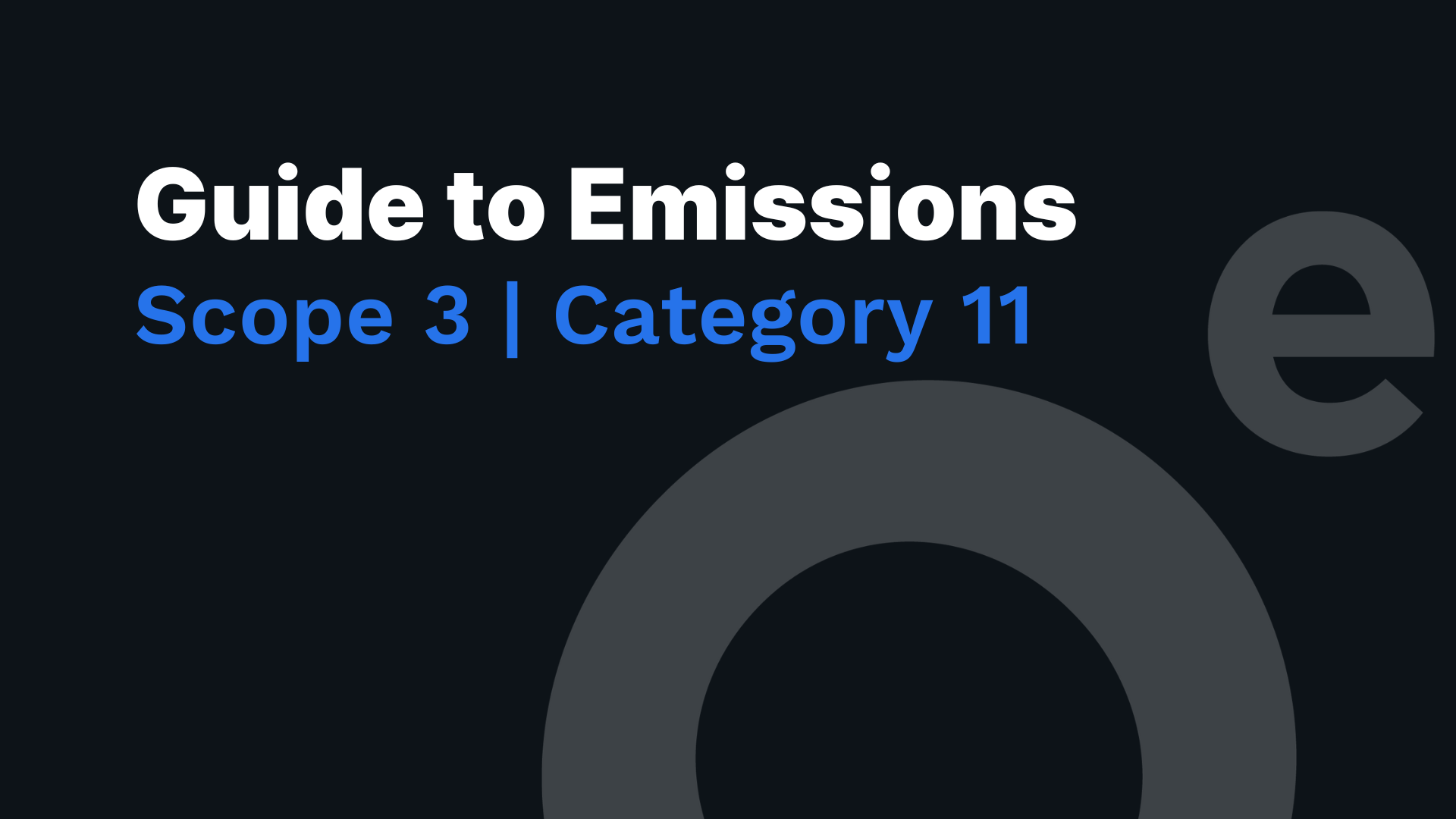What is Scope 3 Category 11 Emissions?
Category 11 covers emissions from the use of goods and services sold by the reporting company during the reporting year. The scope 3 emissions from the use of sold products include scope 1 and scope 2 emissions generated by end users, both consumers and business customers that utilize final products.
Emissions from the use of sold products are divided into two types in the Scope 3 Standard (see table below for more detail):
Direct use-phase emissions
Indirect use-phase emissions
Companies must include direct use-phase emissions of sold products in Category 11. They can also account for indirect use-phase emissions if they are expected to be significant. Refer to Table below for descriptions and examples of direct and indirect use-phase emissions.
Category 11 considers the total expected lifetime emissions of all relevant products sold in the reporting year across the company's product portfolio. The GHG Protocol Product Standard offers information on accounting for life cycle GHG emissions from individual products.
Additionally, companies may choose to include emissions related to the maintenance of sold products during their use.
What data is Needed to Count the Emissions?
To calculate emissions for Scope 3 Category 11 (Use of sold products), you will need the following data:
Product inventory: Identify all goods and services sold by your company during the reporting year that generate emissions during their use.
Lifetime use information: Estimate the expected lifetime use of each product, including the duration and frequency of use.
Direct and indirect use-phase emissions: Determine the types of direct and indirect use-phase emissions associated with each product. Examples include fuel combustion and electricity consumption.
Quantities: Estimate the quantity of each product sold during the reporting year.
Emission factors: Obtain accurate emission factors for different use-phase emissions, such as fuel combustion or electricity consumption. This data can be sourced from governmental or industry-specific guidelines, or from organizations like the Intergovernmental Panel on Climate Change (IPCC) and the World Resources Institute (WRI).
Optional maintenance emissions: If you choose to include emissions related to the maintenance of sold products during their use, gather information on maintenance practices and associated emissions.
Once you have collected this data, you can calculate your company's emissions from the use of sold products by applying the relevant emission factors to the estimated quantities and use-phase emissions. Sum up the emissions associated with the use of all products sold during the reporting year to determine the total emissions for Scope 3 Category 11.
What Methods is Available to Count the Emissions?
The method involving counting all the emissions from the direct and indirect use phase of the sold products. Companies should first determine in which categories their products belong. The following products have direct-use phase emissions:
Products that directly consume energy (fuels or electricity) during use: involves breaking down the use phase, measuring emissions per product, and aggregating emissions
Fuels and feedstocks: involves collecting fuel use data and multiplying them by representative fuel emission factors
Greenhouse gases and products that contain or form greenhouse gases that are emitted during use: involves collecting data on the GHG contained in the product and multiplying them by the percent of GHGs released and GHG emission factors.
If a company sells a large selection of products, or if the use phase of multiple products is similar, it may choose to group similar products and use average statistics for a typical product in the product group. For example, a fast-moving consumer goods company selling carbonated drinks may decide to group products by packaging types and treat all products within that group with the same use profile.
An example of a product with indirect use-phase emissions is a refrigerator. When a refrigerator is used, it consumes electricity to cool the contents inside. The direct use-phase emissions come from the electricity consumed during the refrigerator's operation.
However, indirect use-phase emissions occur when the refrigerator's cooling process indirectly leads to other emissions. For example, when refrigerators are not properly sealed, they allow cool air to escape, forcing the appliance to work harder and consume more electricity. This increased energy consumption leads to higher emissions from power generation. In this case, the additional emissions caused by the refrigerator's imperfect sealing are considered indirect use-phase emissions.
